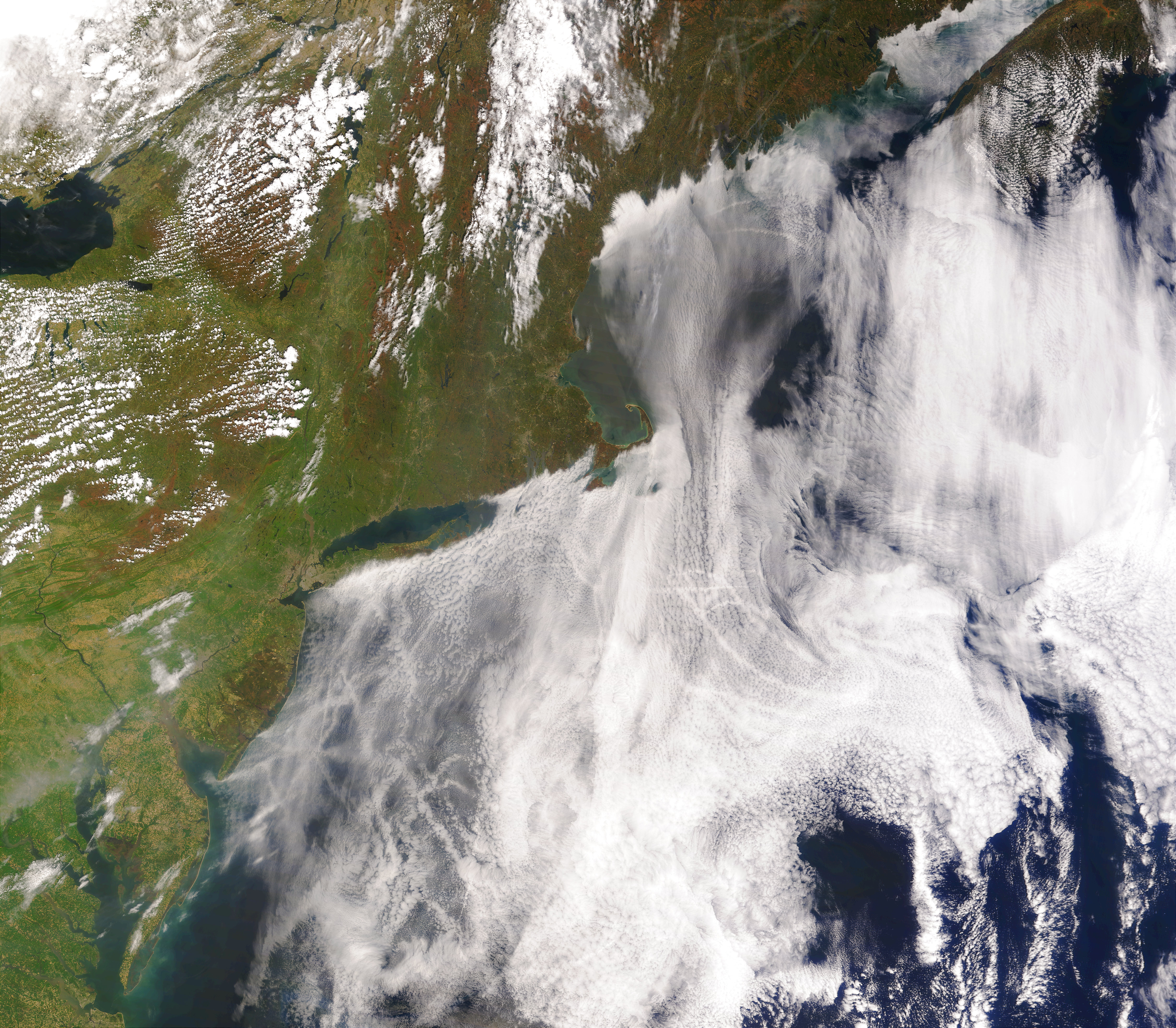Clouds scribe global commerce
Another, less practical, but far prettier way is to look in the clouds:
Ship tracks are clouds that form in calm, humid conditions at sea, when water vapor condenses around the exhaust from ships' smokestacks. The phenomenon was first noted in the 1960s, when the first satellites began photographing Earth's atmosphere from above. Above is the mid-Atlantic coast of the United States, between Chesapeake Bay and Cape Cod. Below is an image of the ocean off the western coasts of France and Spain in 2003:

Image: NASA Earth Observatory
Climatologists are keen on ship tracks because it offers a controlled, isolated way of studying how air pollution from an individual source can affect cloud formation and climate - the same way that millions of cars, power plants, homes and businesses do over land.These images reveal an important difference between clouds formed from natural cloud condensation nuclei (like dust or sea salt) and those formed from particles in ship exhaust. First, the ship track clouds contain greater amounts of smaller liquid water particles (shown in yellow) than surrounding natural clouds (shown in red). The optical thickness of the ship track clouds is different as well, showing up as dark orange streaks.
Why are these characteristics important? A cloud’s optical thickness determines how much sunlight reaches the Earth’s surface and how much is reflected or absorbed by the clouds, factors that influence global temperatures. The size of cloud particles is important, too. In general, smaller particles [like those in ship tracks] produce brighter, more reflective clouds, which bounce light from the sun back into space and cool the planet. If that sounds like a good way to combat global warming, consider this: when particles are small, they are less likely to collide with one another often enough to produce raindrops. Indeed, in some parts of the world, increasing, persistent air pollution appears to be contributing to drought.
Cloud tracks came to my attention via Nova's "Dimming the Sun" program, which documents various ways that humans are blotting out the sun with air pollution. Nova offers these satellite images of airline contrails over Georgia, Alabama, and northern Florida:

Airline contrails are harder to study, since there are so many of them crisscrossing each other. But in the days following September 11, 2001, scientists had a rare opportunity to make some broad observations about their effects: "from roughly midday September 11 to midday September 14," according to the Nova website, "the days had become warmer and the nights cooler, with the overall range greater by about two degrees Fahrenheit."
The satellite image below is from September 12th, 2001. A sky normally crowded with contrails only has a few parallel tracks in this photo: they are the tracks of former-President Bush's plane and several escort fighters, returning to Washington from the undisclosed location in Nebraska.







2 comments:
Very interesting! Look at all those planes. I would like to read more about the fluctuations in temperatures for a few days after Sept. 11th. If the temperatures were slightly more extreme in those days, does that mean the temperatures vary more in places like extreme northern Maine and the arctic circle where there is very little air traffic? Hmmm.
Post a Comment